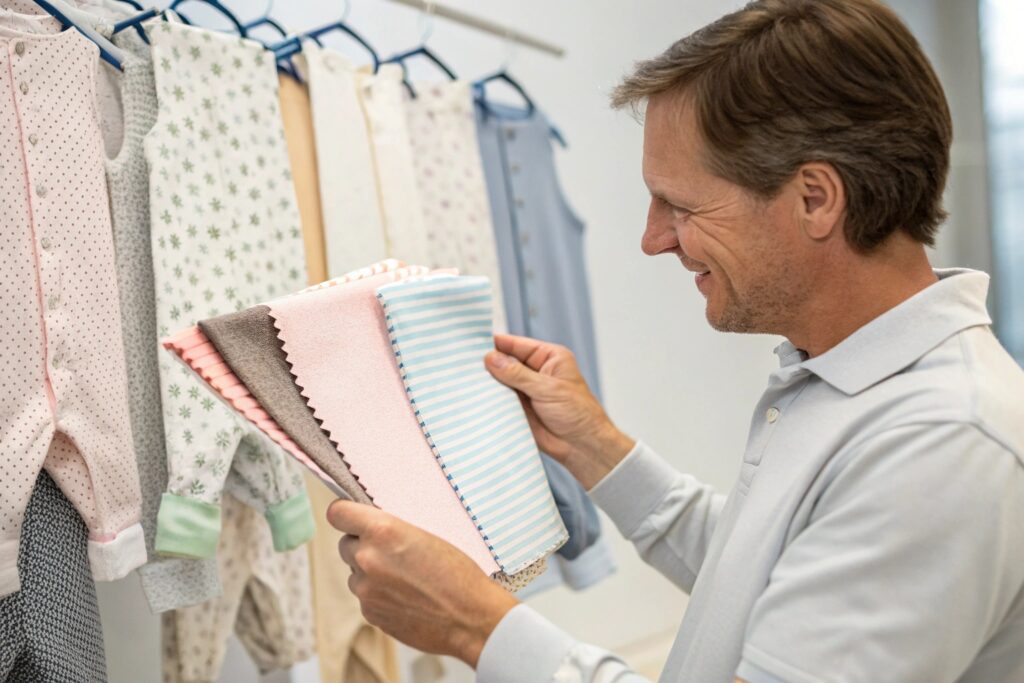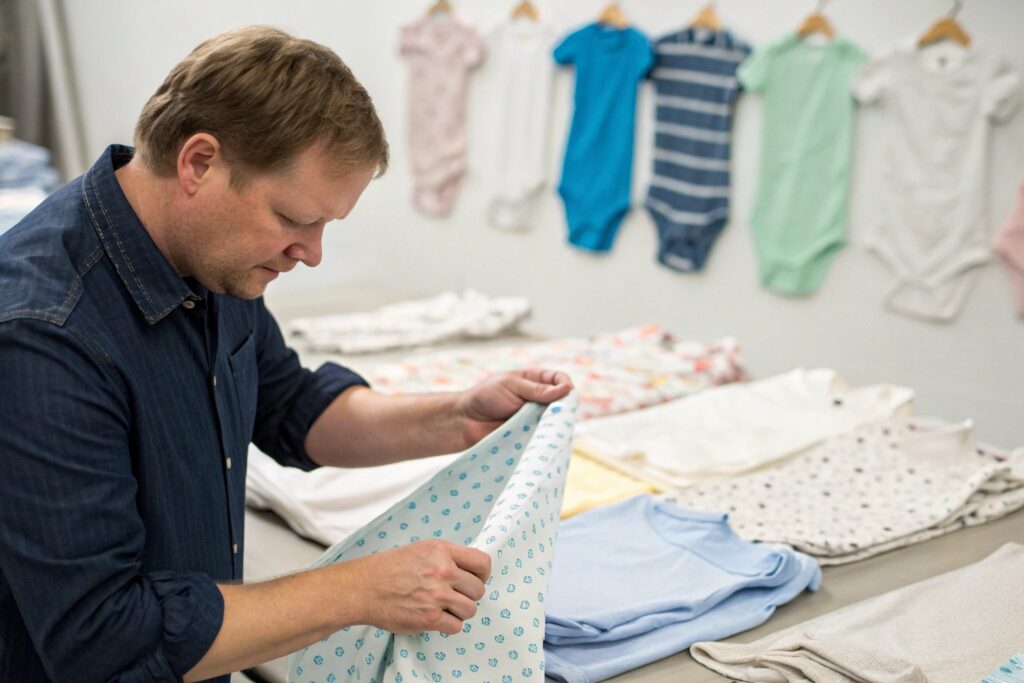Choosing the right fabric for children's clothing means balancing comfort, durability, affordability, and safety—all while keeping costs manageable for brands and parents.
Cotton blends are often the best choice for children’s clothing, offering a strong balance between price, comfort, durability, and ease of care without sacrificing safety.
Let’s break down the smartest fabric options for affordable, high-quality kidswear.
Why Cotton Blends Offer a Good Balance of Price and Comfort?
Pure organic cotton is luxurious but pricey. 100% synthetic fabrics are cheap but uncomfortable. Cotton blends often strike the perfect middle ground.
Cotton blends offer a good balance of price and comfort by combining the breathability of natural cotton with the durability and stretch of synthetic fibers, making clothes affordable, soft, and long-lasting.

Benefits of cotton blends:
| Feature | Why It Matters for Kidswear |
|---|---|
| Softness | Keeps sensitive skin happy and itch-free |
| Durability | Resists tears, stretching, and heavy washing |
| Affordability | Costs 20–30% less than 100% cotton |
| Wrinkle and shrink resistance | Easier for parents to maintain |
| Breathability with strength | Suitable for active kids |
Popular blends include:
- Cotton-polyester (e.g., 60/40 or 80/20)
- Cotton-spandex (for stretchy leggings and tees)
Brands that use cotton blends achieve both accessible price points and wear-and-tear durability—especially important for fast-growing kids.
How to Choose Durable, Budget-Friendly Fabrics for Kidswear?
Fabric isn’t just about feel—it must survive daily adventures, endless washes, and the occasional playground tumble.
To choose durable and budget-friendly fabrics for kidswear, prioritize medium-weight cotton blends, reinforced weaves, and materials that maintain structure after multiple washes.

Key fabric qualities to check:
| Fabric Property | What It Means for Clothing Lifespan |
|---|---|
| Tensile strength | Resists tearing during active play |
| Pilling resistance | Fewer fuzz balls after washing |
| Colorfastness | Colors stay vibrant after sun and sweat exposure |
| Shrink resistance | Maintains sizing after laundering |
| Soft yet strong handfeel | Feels gentle but doesn’t sag or thin out |
Top fabric picks for affordable, durable kidswear:
- Cotton-poly interlock knit (great for t-shirts and rompers)
- Terry cotton-poly blends (perfect for hoodies and playwear)
- Cotton-poplin with a little spandex (for structured dresses and shirts)
Always ask suppliers for shrinkage test results and wash durability ratings before finalizing fabric selection.
Pros and Cons of Polyester, Cotton, and Bamboo Materials?
Each fabric type brings trade-offs. Smart kidswear brands know how to balance cost, feel, and functionality depending on product type.
Polyester, cotton, and bamboo fabrics each have strengths and weaknesses when it comes to affordability, comfort, and eco-friendliness.

Quick comparison chart:
| Fabric Type | Pros | Cons |
|---|---|---|
| Cotton | Soft, breathable, natural feel | Can shrink, wrinkles easily, higher cost if organic |
| Polyester | Durable, very affordable, wrinkle-resistant | Less breathable, may feel synthetic against skin |
| Bamboo | Ultra-soft, sustainable, hypoallergenic | More expensive than cotton blends, prone to pilling |
General guideline:
- For everyday basics: Cotton-poly blends
- For special occasionwear: Cotton with spandex or bamboo blends
- For activewear: Polyester-cotton blends or polyester-spandex blends
If your market values eco-consciousness, consider investing slightly more in bamboo or organic cotton options for premium categories.
Tips for Finding Affordable Fabrics Without Sacrificing Safety?
Affordability should never mean cutting corners on chemical safety—especially in children's clothing.
To find affordable fabrics without sacrificing safety, work with verified suppliers, request OEKO-TEX® or GOTS certifications, and avoid low-grade synthetic blends with unknown chemical finishes.

Smart sourcing tips:
| Tip | Why It Matters for Child Safety |
|---|---|
| Request fabric certificates | Ensures low chemical residue and skin safety |
| Test fabric samples personally | Feel breathability and softness firsthand |
| Choose reputable mills | Proven safety track records reduce risk |
| Avoid unknown “discount” blends | May contain unsafe dyes or coatings |
| Use lower grades of safe materials over cheap unknowns | Better trust-building for your brand |
At Fumao, we source budget-friendly yet OEKO-TEX® certified cotton-poly fabrics for brands seeking both value and skin safety guarantees.
Always remember: Cheap upfront fabric isn’t really cheaper if it causes customer complaints, returns, or product recalls later.
Conclusion
For children’s clothing, the cheapest and best quality material often comes from smart cotton blends—offering a balance of cost, comfort, and durability. By choosing the right fabrics, verifying safety, and matching materials to garment type, brands can build collections that are both parent-approved and profitable.










